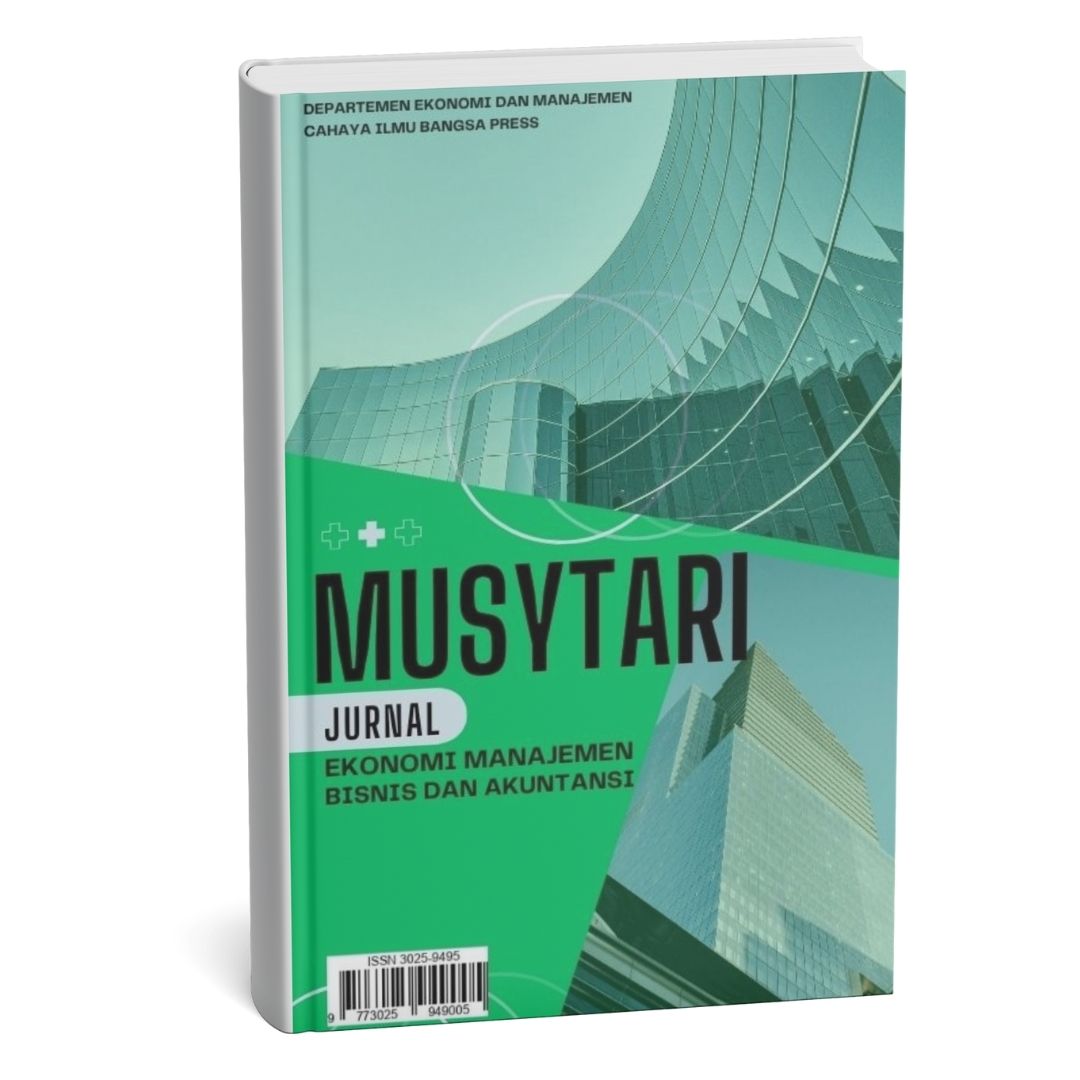PENGARUH NON-PERFORMING LOAN TERHADAP KINERJA KEUANGAN BANK UMUM DI INDONESIA
Main Article Content
Abstract
This study aims to analyze the influence of Non-Performing Loans (NPLs) on the financial performance of commercial banks in Indonesia. Financial performance is measured using the Return on Assets (ROA) and Return on Equity (ROE) indicators. This study uses secondary data obtained from financial statements published by the Financial Services Authority (OJK) for the period 2019 to 2023. The sample was selected by the purposive sampling method of 15 conventional commercial banks. The data analysis technique used was multiple linear regression with the help of SPSS software. The results showed that the average NPL ratio of the sample bank during the study period was 3.20%, with an average ROA of 2.10% and an ROE of 12.30%. The results of the regression test prove that NPLs have a negative and significant effect on ROA and ROE. The significance value of the t-test for NPLs at ROA was 0.003 and at ROE was 0.001. This indicates that the higher the non-performing loan ratio, the more the bank's financial performance decreases. These findings are consistent with credit risk theory and previous research results. The novelty of this study lies in testing the impact of NPLs in the midst of Indonesia's economic recovery after the COVID-19 pandemic, which is characterized by a downward trend in the industrial NPL ratio from 3.06% in 2020 to 2.35% in 2023 (OJK, 2023). The implications of the results of this study are important for bank management in strengthening credit risk mitigation strategies as well as for regulators as a basis for the formulation of more adaptive banking supervision policies.
Downloads
Article Details
Section

This work is licensed under a Creative Commons Attribution-NonCommercial-ShareAlike 4.0 International License.
How to Cite
References
Akbas, F., Markov, S., Subasi, M., & Weisbrod, E. (2018). Determinants and Consequences of Information Processing Delay: Evidence from the Thomson Reuters Institutional Brokers’ Estimate System. Journal of Financial Economics, 127(2), 366–388. https://doi.org/10.1016/j.jfineco.2017.11.005
Brealey, R. A., Myers, S. C., & Allen, F. (2017). Principles of Corporate Finance (12th ed.). New York: McGraw-Hill Education.
Hull, J. C. (2018a). Options, Futures, and Other Derivatives (9th ed.). Harlow: Wiley.
Hull, J. C. (2018b). Risk Management and Financial Institutions (5th ed.). Hoboken: Wiley.
Sudirman, I. M. S. N., Irwanto, A., & Basuki. (2017). Disposition Effect on Investment Decision Making: Explanation of Regulatory-Focus Theory. In E. Lau, L.-M. Tan, & J. H. Tan (Eds.), Selected Papers from the Asia-Pacific Conference on Economics & Finance (APEF 2016) (pp. 19–29). Singapore: Springer Singapore.
Otoritas Jasa Keuangan. (2020–2023). Laporan Statistik Perbankan Indonesia. www.ojk.go.id
Otoritas Jasa Keuangan. (2022). Statistik Perbankan Indonesia Desember 2021. Retrieved from https://www.ojk.go.id/id/kanal/perbankan/data-dan-statistik/statistik-perbankan-indonesia/Documents/2022/SPI-Desember-2021.pdf
Otoritas Jasa Keuangan. (2023). Statistik Perbankan Indonesia Desember 2023. Retrieved from https://www.ojk.go.id/id/kanal/perbankan/data-dan-statistik/statistik-perbankan-indonesia/Pages/Statistik-Perbankan-Indonesia---Desember-2023.aspx
Sudirman, I. M. S. N., Irwanto, A., & Basuki. (2017). Disposition effect on investment decision making: Explanation of regulatory-focus theory. In E. Lau, L.-M. Tan, & J. H. Tan (Eds.), Selected Papers from the Asia-Pacific Conference on Economics & Finance (APEF 2016) (pp. 19–29). Singapore: Springer.
